Generally speaking, the term “industrial dryers” applies to any machine that removes liquid or moisture from bulk materials. Industrial dryers are much larger than the average domestic dryer and are not to be confused with at-home laundry dryers or industrial hand dryers. Read More…
Dürr is a leading global supplier of environmental solutions and engineered products tailored to meet customers' industrial process requirements. We offer a complete portfolio of air pollution control technologies and drying and curing systems, including industrial dryers and ovens for roll-to-roll processes, web forming processes and conveyor handling of webs, as well as specialized coating...

The Onix Corporation is a leader in the dryer industry, specializing in rotary dryer & wood combustion systems, dryer control systems, & air pollution control systems. Other areas of expertise are wood fired boilers & industrial consulting on existing rotary dryers. All our equipment is industrial duty 24/7 equipment & carries a hostile environment rating, UL listing & a 3-year warranty.

Dri-Air Industries' expertise is in plastic drying technology. The plastic drying systems we offer problem solve for drying plastic resins, mixing and blending. Our product line includes industrial dryers, desiccant air dryers and hot air dryers. Newly offered is our micro dryer for micro molding machines.
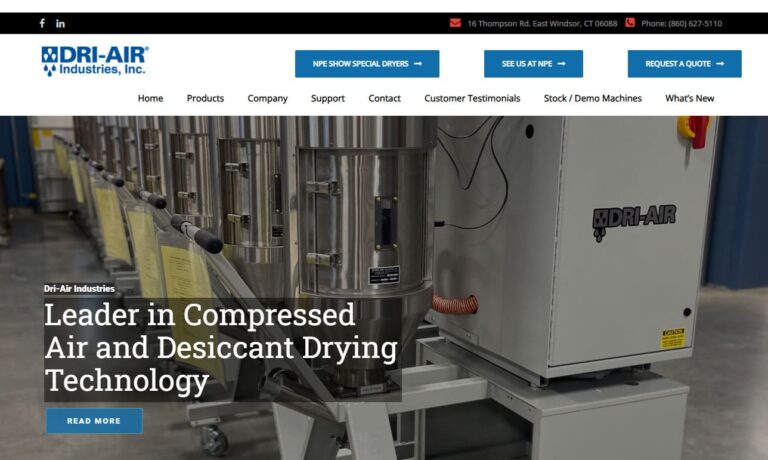
BTU International is a global supplier/manufacturer of thermal processing solutions. Combining our engineering expertise with our acquisition of Radiant Technology Corporation’s product line, we have created the Rapid Thermal Processing (RTP) line of furnaces, specifically designed for solar cell applications such as contact drying/firing and metalization.
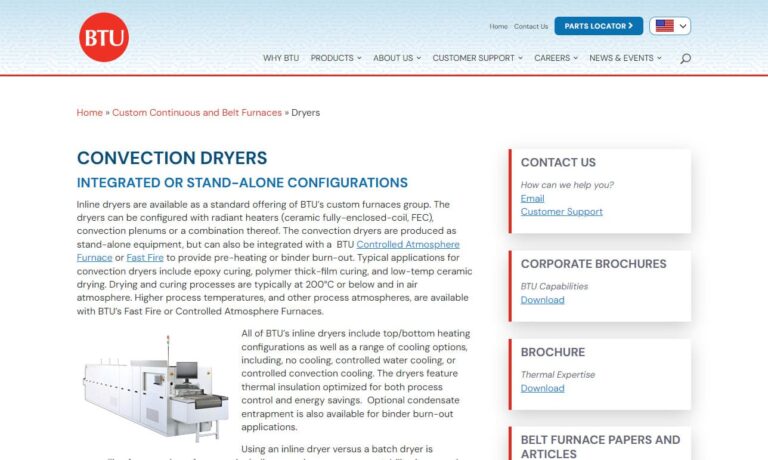
More Industrial Dryer Manufacturers
Applications
Industries such as water treatment, air and pollution control, food processing, paper and pulp, agriculture, pharmaceuticals, plastics, and industrial manufacturing rely heavily on industrial dryers. These powerful machines are essential for drying various substances and products, including refuse, sludge, dairy products, grain, paper, plastics, fertilizer, and chemicals. Unlike the large dryers found in laundromats or hotels, industrial dryers are not typically used for laundry purposes.
History
For millennia, humans have mastered the art of drying food and clothing through ingenious methods such as smoking, burying in sand, freeze drying, sun drying, and wind drying. This practice was essential for preserving food for personal use and trade long before the advent of modern technology. The breakthrough in mechanical drying came in the early 1700s, pioneered by Frenchmen Chollet and Masson. They devised a method to pass wet, pressed vegetable pulp through a tunnel heated to 105℉, resulting in dry cakes. Though not particularly flavorful, these cakes were nutritious and far less perishable, making them an ideal sustenance for soldiers and sailors, and serving as a precursor to modern rations.
Years later, the renowned cereal tycoons C.W. Post and W.K. Kellogg revolutionized breakfast by employing a shared technique. They transformed crushed grain paste into delectable flakes by sending it through ovens, where the heat worked its magic. This innovative approach not only birthed the beloved cereal but also paved the way for the rise of processed and packaged foods. As these products gained popularity, other manufacturers adopted industrial drying methods in their own commercial food facilities, further expanding the landscape of modern convenience foods.
Around 1833, American salt miners revolutionized their industry by introducing mechanical evaporation to purify brine, resulting in high-quality salt. Initially using open pans, they later transitioned to more efficient closed vacuum pans. Eventually, they adopted wood-burning salt evaporators, also known as furnaces, to further enhance their production process.
A close relative of the industrial dryer is the familiar household appliance, the clothes dryer. One of the earliest mechanical iterations of this device was the ventilator, conceived by a French inventor named M. Pochon around 1799 to 1800. Pochon’s ventilator featured a perforated metal drum operated by a hand crank, providing a more efficient method for drying clothes. Users would place their wet garments into the drum and turn the crank over an open fire. While this invention had its drawbacks—clothes often emerged with a smoky scent and could even become sooty—it was a significant step forward, paving the way for the modern tumble dryer.
In 1892, George Sampson, an inventive American, revolutionized the drying process by enhancing the Pochon dryer. He reimagined it as a perforated metal rack that could be positioned above a stove, offering a significant improvement over the traditional method of hanging clothes over an open flame. This innovative design allowed garments to dry gently, without direct exposure to intense heat. Sampson’s contribution was so significant that he became the first to coin the term “clothes dryer.”
In 1938, American innovator J. Ross Moore revolutionized laundry day by designing the first electric tumble dryer. A few years down the line, the visionary industrial designer Brooks Stevens introduced a window to the dryer, transforming its functionality and aesthetic appeal while also making it more affordable for the average household. This marked the dawn of the tumble dryer’s golden age. Through the 1940s and 1950s, manufacturers eagerly raced to enhance these machines, incorporating advanced features like timers, cool air drying, temperature control, and dryness sensors, turning the once-humble dryer into a marvel of modern convenience.
During World War II, biologists embarked on innovative freeze-drying experiments with substances such as bone tissue, blood, and penicillin. They discovered that this process significantly extended the shelf life of these crucial materials. This breakthrough proved invaluable for nurses and doctors in field hospitals, providing them with reliable medical supplies in challenging conditions.
As dryers became a staple in various industries, scientists and engineers began to explore their potential for diverse applications. They modernized the drying components, replacing outdated materials with stainless steel, and swapping trays for drums and screens. Nowadays, industrial dryers are indispensable to markets worldwide, with their uses and capabilities expanding continually. Looking ahead, we can anticipate these machines becoming even more efficient and environmentally friendly.
How It Works
Industrial dryers typically function by promoting evaporation, a process where liquid is transformed into gas and dispersed into the atmosphere. In certain instances, these dryers also employ sublimation, where a solid directly transitions into a gaseous state.
These dryers operate through three distinct methods: air drying, spray drying, and infrared drying. Among these, air drying stands out as the most prevalent technique. This method is straightforward, involving the exposure of materials to either cold or hot air. The direct contact with the air facilitates the drying process. Various types of air dryers, such as fluidized bed dryers, rotary dryers, flash dryers, and freeze dryers, utilize this approach, each bringing unique advantages to the drying process.
Types
Fluidized bed dryers, often called fluid bed dryers, harness the power of intense heat and mass exchange to effectively dry materials. In these dryers, the substances to be dried are placed on a permeable surface. They are then subjected to a heated gas or air stream. This causes the particles within the materials to vibrate slightly, as the force from the air becomes just enough to overcome gravity. This vibration ensures an even and efficient thermodynamic drying process. Fluidized bed dryers are ideal for drying uniformly sized materials, such as powders, pharmaceuticals, and food items like cereal.
Conduction dryers operate by directly transferring heat to the molecules of the materials they dry. This process causes the molecules to vibrate faster, generating warmth and facilitating drying. These dryers are particularly effective for handling very wet or very thin materials, making them a preferred choice in such scenarios.
Convection dryers operate similarly to heaters, utilizing circulating dry heat to remove moisture from items. These devices employ temperature-controlled fans or blowers paired with air duct systems to circulate external air. In all cases, the air used in convection dryers is always hotter than the items being dried. People often buy convection dryers to target specific areas, such as a particular room, and they are effective for drying solids, liquids, and gasses.
Rotary dryers, often referred to as drum dryers, are composed of expansive, rotating cylindrical tubes designed for drying various materials. When in operation, products and materials are placed inside the dryer, where they traverse through multiple chambers. Within these chambers, the items tumble and come into contact with hot air, effectively facilitating the drying process. This hot air can either directly interact with the materials or indirectly affect them by radiating from an adjacent chamber. Rotary dryers are particularly effective for drying a range of substances, including powders like industrial chemicals, laundry detergents, and metal powders.
flash dryer are innovative pneumatic devices designed to rapidly dry moisture-laden particles suspended in materials or air streams within a matter of minutes. Their operation is straightforward: as materials pass through the drying duct, a brief but intense burst of high heat is applied, effectively evaporating the moisture and leaving the particles dry.
Freeze dryers operate by initially lowering the air temperature to such an extreme degree that all moisture within the substances freezes solid. Then, they gently heat the frozen material just enough to transform the ice directly into water vapor, bypassing the liquid phase entirely. This process, known as sublimation, leaves the substances utterly dry. Freeze dryers are essential for preserving delicate materials like penicillin and blood plasma, and are also used in creating instant coffee.
Spray dryers, despite their name, employ hot steam to remove moisture from substances. The process begins as automated machinery or human operators feed materials into the dryer, where solids are initially separated. Next, the remaining substance is exposed to a stream of hot steam, causing the moisture to evaporate. Once vaporized, the dry solids are collected for disposal or recycling. This steam spray can be maintained as a continuous stream or operated in batches, depending on the need. Commonly used alongside continuous and conveyor dryers, spray dryers are prevalent in industries such as food processing, pharmaceuticals, and pollution control. In these sectors, they play a crucial role in drying items like food flavorings, salts, pigments, and various other materials.
Infrared dryers harness the power of infrared wavelengths to efficiently dry materials and products from within, ensuring they do not overheat. This technology works by directing infrared radiation, which is absorbed by solid matter rather than air, aligning with the material’s properties to achieve uniform drying. Manufacturers craft these dryers in various forms, such as quartz tube models, short wave lamp designs, or perforated panel configurations. They play a crucial role in numerous industries, including paper production, apparel manufacturing, ink drying, textile processing, paint baking, and adhesive curing, among many others.
Tray dryers, also known as vacuum dryers or vacuum tray dryers, are essential tools in the pharmaceutical industry. They are specifically designed to dry high-grade, temperature-sensitive, and oxygen-sensitive products. These dryers excel in handling hygroscopic substances and lumpy, glutinous products that have low pomposity, ensuring that these delicate materials are dried efficiently and safely.
Steam tube dryers are an innovative twist on the traditional rotary dryer. Inside the rotating cylinder, materials tumble and mix while a network of small internal tubes enhances the heat transfer surface area, making the drying process more efficient and effective.
Besides these common types, there are also specialized dryers crafted for unique purposes, such as sludge dryers, biosolids dryers, suspension or paste dryers, and dispersion dryers.
Sludge dryers are designed with the primary purpose of drying solid matter and evaporating water from sludge and slurry, significantly reducing their volume and weight.
Biosolids dryers, much like sludge dryers, serve a crucial role in transforming sewage waste. They effectively dry the waste, allowing it to be treated and recycled. This process ultimately enables the waste to be repurposed as fertilizer, contributing to sustainable agricultural practices.
Suspension/paste dryers, a specialized form of fluidized dryers, are crafted to evenly mix and thoroughly dry suspensions, pastes, and solid filter cakes.
Dispersion dryers closely resemble suspension dryers in their operation. Both types are employed to remove moisture from substances like wet pastes, slurries, and cakes, ensuring efficient drying of these materials.
Equipment Components
Each type of industrial dryer is equipped with its own distinct set of components, yet they typically share some common features. These usually include sturdy stainless steel rectangular boxes or cylindrical tanks, precise gauges, intake and output valves, strategically placed openings, robust connections, and sophisticated control panels. Continuous dryers, designed to perpetually process incoming materials, often incorporate conveyor belts to seamlessly transport these materials into the drying chamber.
Design and Customization
In crafting industrial dryers, manufacturers focus on building machines that are robust, resistant to corrosion, and perfectly suited to the specific demands of their customers. To create a custom dryer that aligns with your needs, they take into account various factors, including whether you require continuous drying or batch drying, the scale of your operations, the characteristics of the materials to be dried, and your standard operational requirements.
Their construction varies in several ways, including shape and size, the capacity to dry and hold material (both in terms of pounds per hour and overall volume), the level of automation, and the specific fabrication processes used.
For instance, if manufacturers aim for a seamless dryer, they opt for welding. This method not only ensures a smooth finish but also fortifies the dryer against significant stress and vibration, enhancing its durability. When seams aren’t a concern, welding might still be their preferred choice to maintain structural integrity. Moreover, manufacturers can customize your dryer to function in tandem with other equipment, such as a part washer, creating a cohesive operational unit. To explore the customization options available from any industrial dryer manufacturer, it’s best to contact them directly for a detailed discussion.
Safety and Compliance Standards
No matter your industry, your industrial dryers need to meet the energy standards put out by the Department of Energy, and the safety standards put out by OSHA.
Finding the Right Manufacturer
Finding a manufacturer tailored to your needs is crucial. Such a manufacturer will grasp your specific requirements and produce a dryer that fits both your needs and budget. Moreover, the right manufacturer will ensure timely delivery of your dryer. If you prefer, they can also handle the setup for you or recommend a reliable third-party installer. Additionally, they will offer the level of post-installation support you desire, ensuring your satisfaction long after the purchase.
Find a manufacturer like that by checking out the industrial dryer suppliers we have listed on this page.


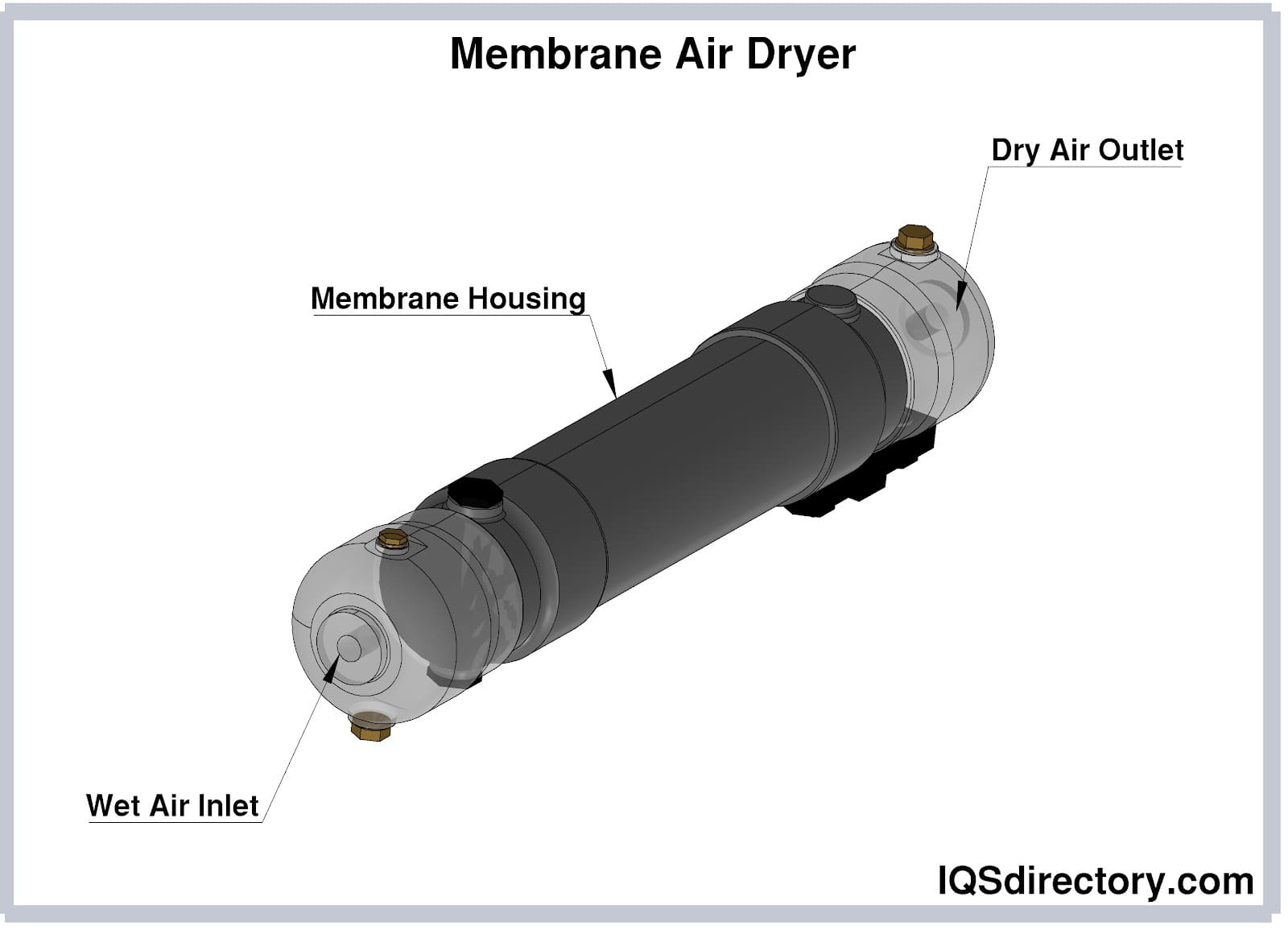
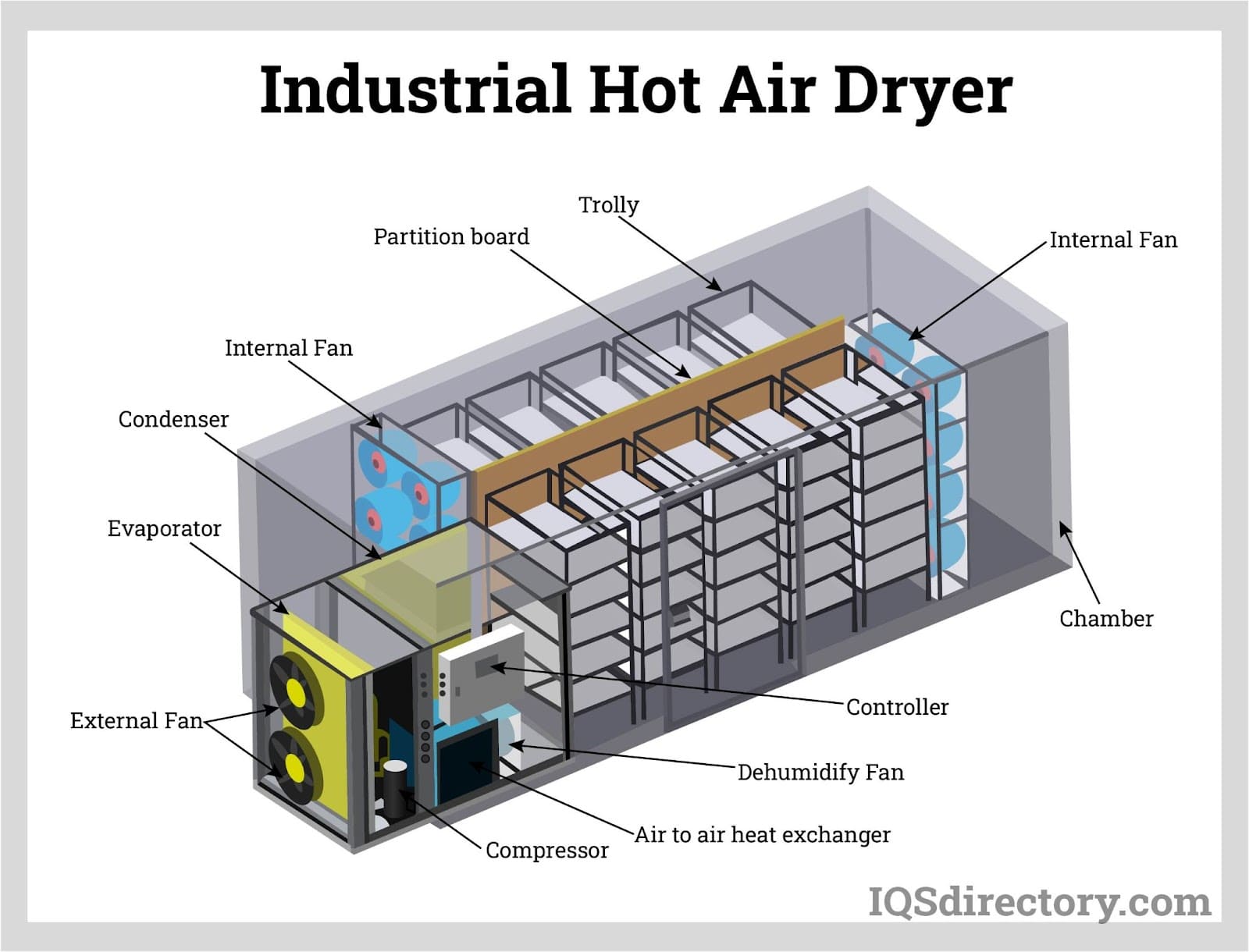
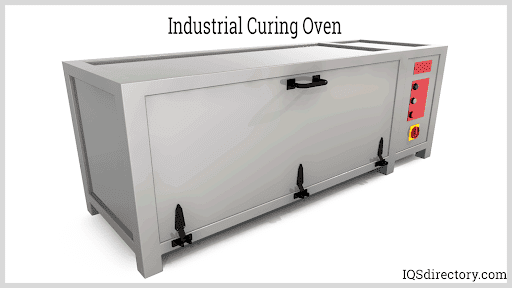
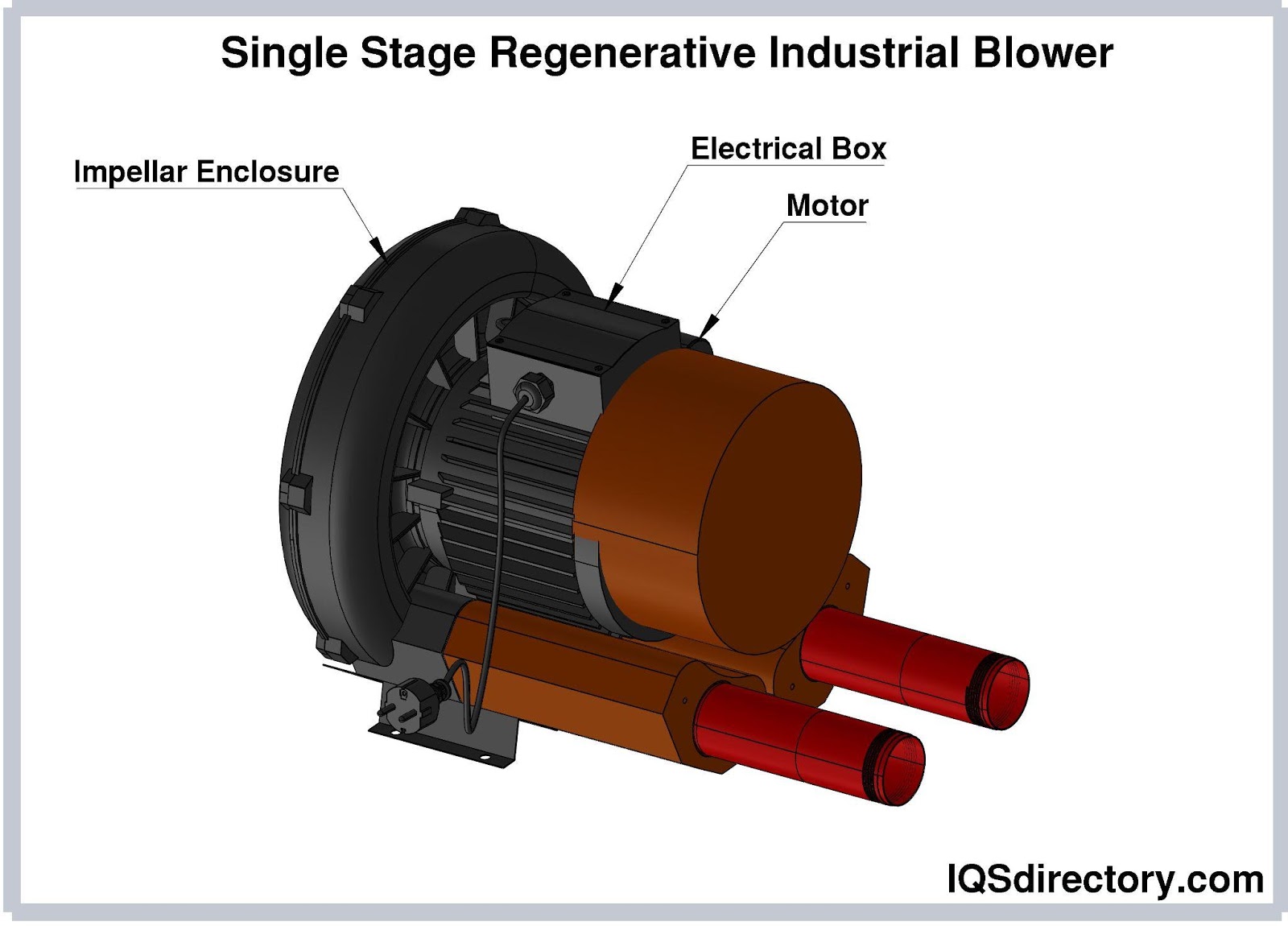
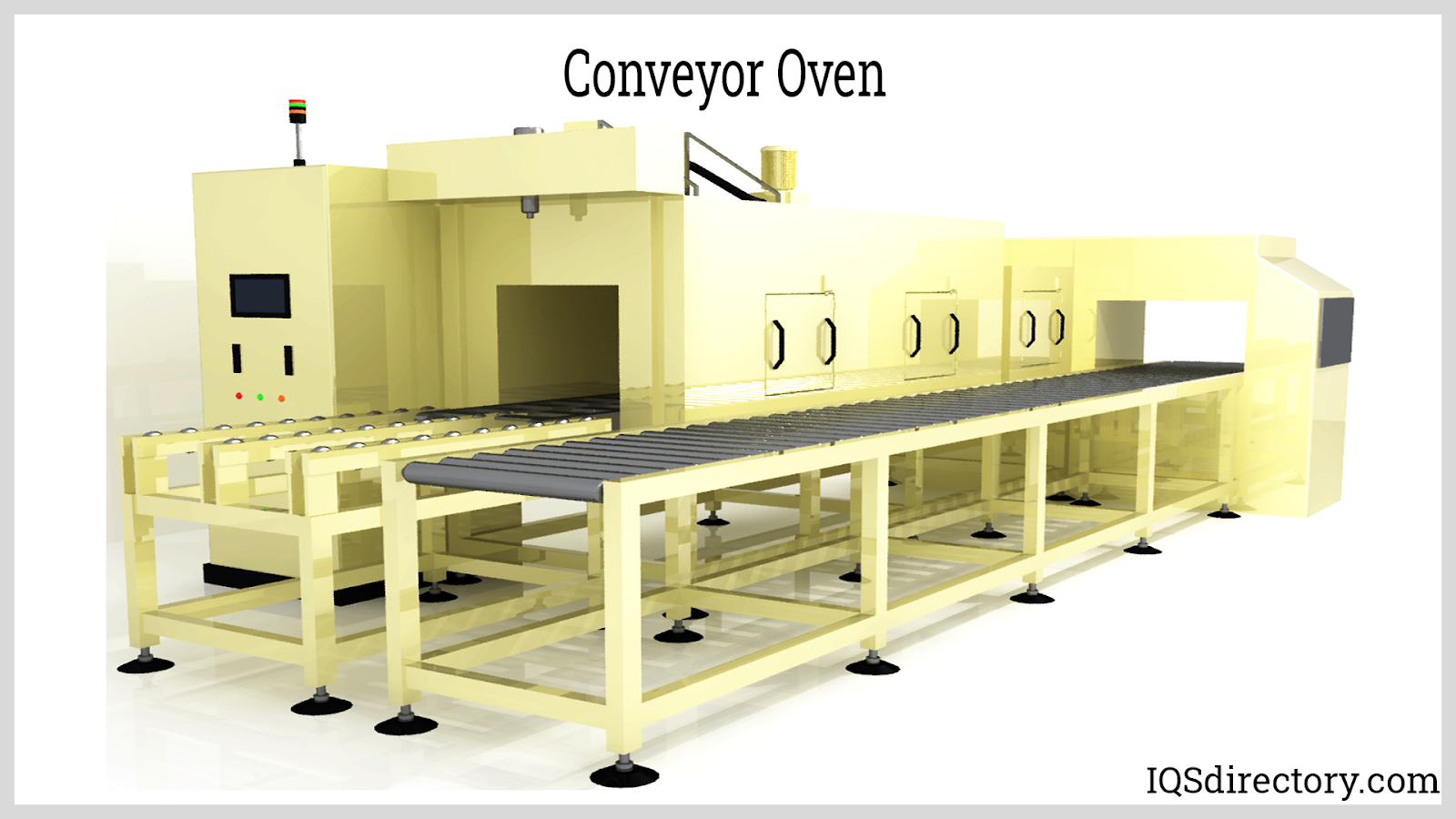
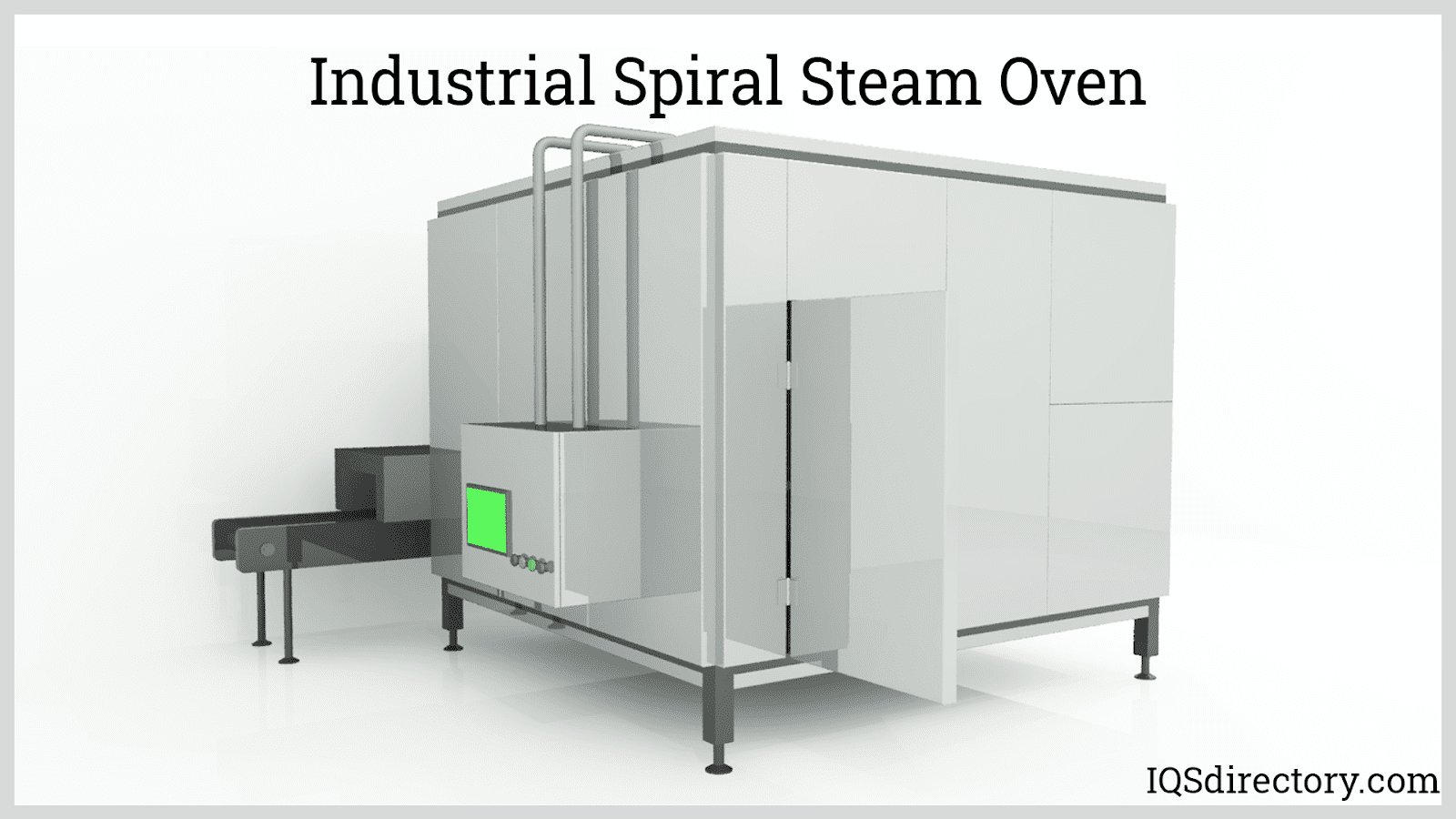
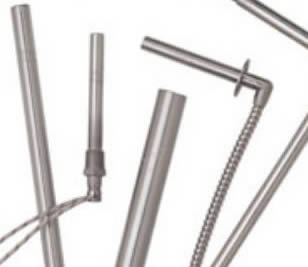 Electric Heaters
Electric Heaters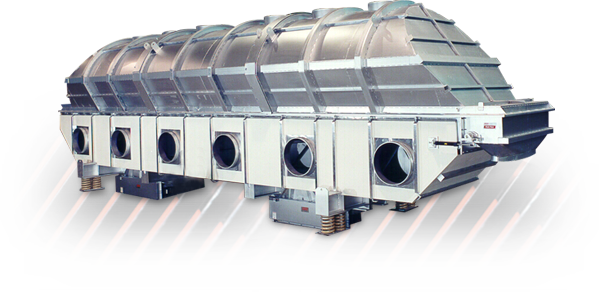 Industrial Dryers
Industrial Dryers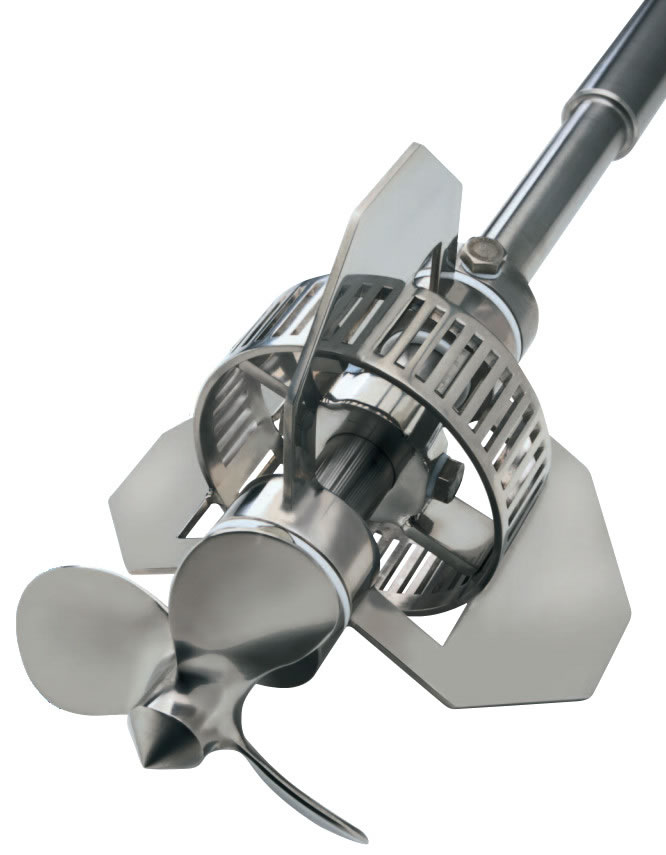 Industrial Mixers
Industrial Mixers Industrial Ovens
Industrial Ovens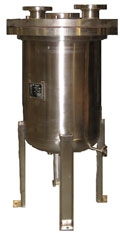 Pressure Vessels
Pressure Vessels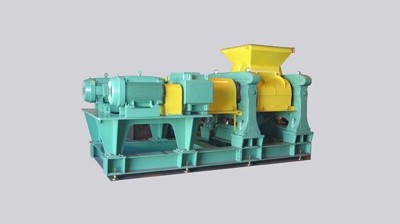 Pulverizers
Pulverizers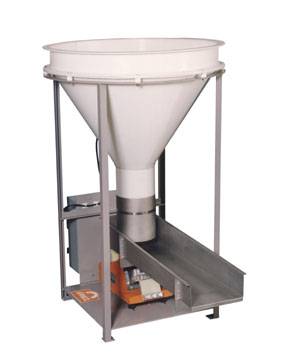 Vibratory Feeders
Vibratory Feeders Castings & Forgings
Castings & Forgings Bulk Material Handling
Bulk Material Handling Electrical & Electronic Components
Electrical & Electronic Components Flow Instrumentation
Flow Instrumentation Hardware
Hardware Material Handling Equipment
Material Handling Equipment Metal Cutting Services
Metal Cutting Services Metal Forming Services
Metal Forming Services Metal Suppliers
Metal Suppliers Motion Control Products
Motion Control Products Plant & Facility Equipment
Plant & Facility Equipment Plant & Facility Supplies
Plant & Facility Supplies Plastic Molding Processes
Plastic Molding Processes Pumps & Valves
Pumps & Valves Recycling Equipment
Recycling Equipment Rubber Products & Services
Rubber Products & Services